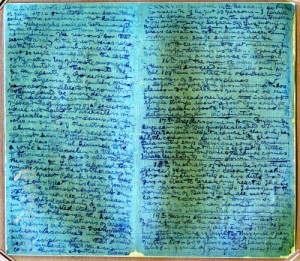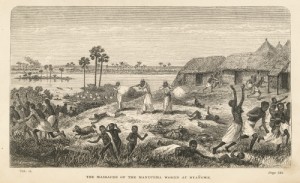
Scholars have published the lost journals of the famous British abolitionist and explorer of Africa, David Livingstone in their David Livingstone Spectral Imaging Project. The Project uses the method of transcribing to learn about Livingstone’s travels, which includes information about his five-month stay in the Congo and also first-hand account of a massacre that killed 500 Africans.
Livingstone’s documentation is nearly illegible due to the ancient language and fragility of the paper but scholars used spectral imaging and processing technology to make the full text available online. Also, the project features an image of Livingstone and a man named Henry Morton Stanley, who was sent by the New York Herald to locate a presumed missing Livingstone, meeting in an African village surrounded by tribesmen. The image suggests that Livingstone fully immersed himself in the African culture and strived to campaign against slavery and learn about the struggles of slavery. There is also an image of the massacre that Livingstone witnessed, which shows several Africans fleeing as Arab slave traders shoot at them with rifles.

The project is a tremendous contribution to history because it includes a spectral image archive, a webpage, essays and notes, and plenty of primary sources. The project gives an in-depth look at important discoveries Livingstone made when he embarked on his journey. The British attempted to colonize several areas in Africa and to see evidence of a British man in Africa trying to combat that movement is rare. His writing is very difficult to transcribe as the words are in cursive, written very close together and in ancient english that is not quite developed yet. Livingstone’s diary can be used to compare ancient and modern documentation and how far we have come as a society. Plenty of historical evidence is surfacing every day and scholars are always attempting to share what they find with the public.
Comments
One response to “Analysis of Livingstone’s 1871 Field Diary”
Good! I like how you have talked about the importance of the documents themselves!